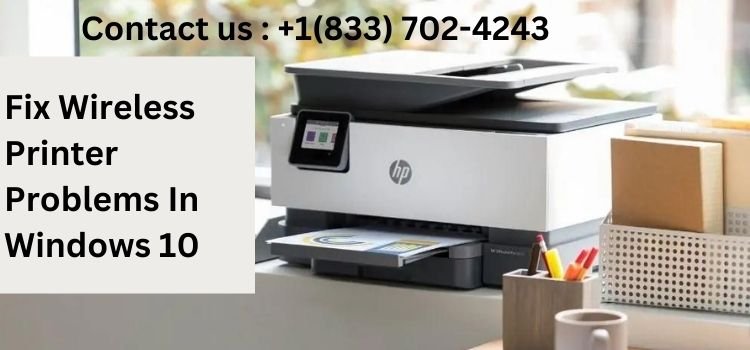Are you struggling with wireless printer connectivity issues on your Windows 10 computer? Don’t worry – you’re not alone. Many users face similar challenges when setting up or maintaining wireless printers. This comprehensive guide will walk you through proven solutions to fix wireless printer problems in Windows 10.
Initial Checks and Basic Troubleshooting
Start with the Basics
First, ensure your printer is turned on and has enough paper and ink. Next, verify that your printer’s wireless function is enabled and working correctly. Additionally, check if the printer’s control panel displays any error messages or warning lights.
Quick Reset Method
Sometimes, a simple restart can resolve mysterious printer issues. Therefore, follow these steps:
- Turn off your printer completely
- Unplug the power cord from the electrical outlet
- Wait for at least 60 seconds
- Plug the power cord back in
- Turn on the printer
Verify Network Connection
Your printer and computer must be connected to the same wireless network. Moreover, check these important points:
- Confirm your Wi-Fi router is functioning properly
- Ensure the printer is within good range of the router
- Verify that your computer has a stable wireless connection
Network Connection Solutions
Check Printer’s Network Status
First, print a network configuration page from your printer’s control panel. This page shows vital network information about your printer. Furthermore, verify these details:
- IP address assignment
- Signal strength
- Network name (SSID)
- Connection status
Reset Printer’s Network Settings
If network issues persist, try resetting the printer’s network settings:
- Access your printer’s control panel
- Navigate to network settings or setup
- Look for the network reset option
- Confirm the reset process
- Reconnect the printer to your network
Router Configuration
Your router settings might be blocking the printer connection. Therefore, check these settings:
- MAC address filtering
- Firewall rules
- DHCP settings
- Network band compatibility
Windows 10 Printer Settings
Update Windows
Keeping Windows 10 updated is crucial for printer compatibility. Follow these steps:
- Open Windows Settings
- Click on Update & Security
- Check for available updates
- Install all relevant updates
- Restart your computer when prompted
Remove and Re-add Printer
Sometimes, removing and adding the printer again solves connection problems:
- Open Settings and go to Devices
- Select Printers & scanners
- Find your printer and click Remove
- Click Add a printer
- Wait for Windows to detect your printer
- Follow the setup wizard
Run Windows Troubleshooter
Windows 10 includes a built-in printer troubleshooter:
- Open Settings and select Update & Security
- Click on Troubleshoot
- Find Printer troubleshooter
- Run the troubleshooter
- Follow any suggested fixes
Driver-Related Fixes
Update Printer Drivers
Outdated drivers often cause connectivity issues. Here’s how to update them:
- Visit your printer manufacturer’s website
- Download the latest Windows 10 drivers
- Uninstall existing printer drivers
- Install the new drivers
- Restart your computer
Alternative Driver Solutions
If official drivers aren’t working, try these options:
- Use Windows Update to find drivers
- Install generic printer drivers
- Try compatibility mode for older drivers
- Use automated driver update tools
Advanced Troubleshooting Steps
Check Windows Services
Ensure crucial Windows services are running properly:
- Press Windows + R
- Type “services.msc” and press Enter
- Find Print Spooler service
- Verify it’s running
- Restart the service if needed
Clear Print Spooler
A corrupt print spooler can cause connection problems:
- Stop the Print Spooler service
- Navigate to C:\Windows\System32\spool\PRINTERS
- Delete all files in this folder
- Restart the Print Spooler service
- Try printing again
Command Prompt Solutions
Use these Command Prompt commands to reset printing systems:
- Open Command Prompt as administrator
- Type “netsh winsock reset”
- Enter “netsh int ip reset”
- Restart your computer
- Test the printer connection
Prevention Tips
Regular Maintenance
Prevent future problems with these maintenance practices:
- Update printer firmware regularly
- Keep Windows 10 updated
- Clean printer hardware monthly
- Check network settings periodically
- Monitor printer status
Backup Solutions
Always have backup printing options available:
- Save printer driver installation files
- Document network settings
- Keep USB cable as backup
- Note down printer configuration details
- Maintain alternative printing methods
When to Seek Professional Help
Signs of Serious Issues
Consider professional help when you notice:
- Persistent hardware errors
- Repeated connection failures
- Physical damage
- Strange noises
- Firmware update failures
Professional Support Options
Several support options are available:
- Contact manufacturer support
- Visit authorized service centers
- Consult IT professionals
- Use online support forums
- Consider warranty coverage
Conclusion
Wireless printer problems can be frustrating but are often fixable. Following this guide should resolve most common issues. Remember to start with basic troubleshooting before moving to advanced solutions. If problems persist, don’t hesitate to seek professional assistance.
Quick Reference Checklist
Before calling support, verify these points:
- Printer power and basic functions
- Network connectivity
- Windows updates
- Driver status
- Print spooler functionality
Keep this guide handy for future reference. Most printer issues can be resolved with patience and systematic troubleshooting. Regular maintenance and updates will help prevent future problems.—empireadda



